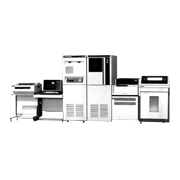In 1982, NEC marketed a series of 32-bit high-performance minicomputers: the NEC MS120, MS140 and MS190.
In addition to employing a 32-bit architecture, this 32-bit family achieved higher system speed by employing features such as pipeline control, memory interleave, partial firmware conversion of operating system functions, and a high-speed standard bus. In particular the MS190, which was announced in January, achieved the world's highest performance in terms of scientific and engineering calculation by employing Current-Mode Logic LSI, a technology from the ACOS System 1000 ultra-large general-purpose computer.
The operating system, NCOS1, was a multi-service operating system used for a variety of applications, including communications network control, industrial control, scientific and engineering calculation and distributed processing, and it efficiently achieved simultaneous execution of multiple online real-time processing, time-sharing processing and batch processing tasks.
| MS120 | MS140 | MS190 | ||
|---|---|---|---|---|
| Announcement date | April 1982 | April 1982 | January 1982 | |
| Memory | Maximum memory capacity | 2MB | 4MB | 16MB |
| Word configuration | 32bit | |||
| Cycle time | 510ns/4byte | 435ns/4byte | 498ns/16byte | |
| Error correction | ECC (Automatic error detection and correction) | |||
| Memory element | LSI (64Kbit/chip) | |||
| Arithmetic | Control system | Microprogram | ||
| Number of instructions | Max. 171, Additional 62 | Basic 207, Additional 85 | ||
| Arithmetic system | Binary parallel, Fixed point | |||
| Decimal operations (Optional) |
Decimal operations | |||
| Floating point (Optional) | ||||
| Registers | 33 | Standard 34, Additional 4 | ||
| Interrupt levels | 37 | |||
| Other mechanisms | Cache memory | none | Standard 32KB | |
| Memory protection mechanism | Standard 32KB | |||
| Scientific operation mechanism | Optional | |||
| Vector operation control mechanism | none | optional | ||



